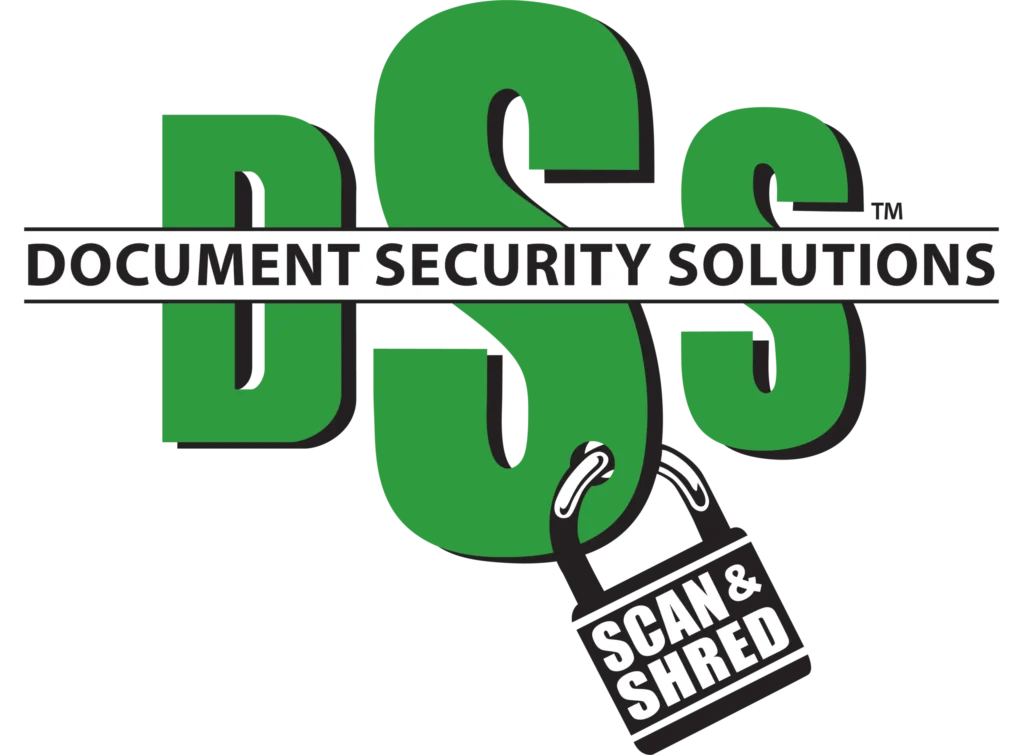Ever tossed an old credit card bill into a basic strip-cut shredder and thought you’re safe? Think again. In this era of identity theft, understanding the different shredding levels is crucial for your data protection. We’ll delve into strip-cut, cross-cut, and micro-cut techniques to help you figure out which one’s best for your needs. Let’s empower you to make informed decisions about safeguarding your sensitive documents.
Defining Shredding Levels: An Overview
You’re about to get a clear overview of what different shredding levels mean, so you’ll know what’s best for your needs. It’s vital to understand the Shredding History and how it has evolved towards today’s Shredding Innovations.
Initially, strip-cut shredders were the norm. They cut paper into long vertical strips. However, they fell out of favor due to security concerns – if someone was determined enough, they could reconstruct documents from these strips.
That led to the development of cross-cut shredders that slice papers both horizontally and vertically. This makes document reconstruction much harder, providing a higher level of security compared to strip-cut.
The latest innovation is the micro-cut shredder that pulverizes paper into confetti-sized particles. It’s practically impossible to reassemble anything shredded this way making it ideal when handling extremely sensitive information.
Remember though, not all data protection regulations are equal worldwide. Some countries require a minimum cross-cut level while others may ask for micro-cutting especially for government or corporate use. Understanding these differences will help you make an informed decision on which shredder level is most appropriate for your specific needs.
The Lowdown on Strip-Cut Shredding
Let’s dive into the basics of strip-cut shredding, shall we? This is a method where documents are cut into long, vertical strips. It’s the most basic form of shredding and offers several distinct advantages.
1. Shredding Speed Comparison: Strip-cut shredders work faster than cross-cut or micro-cut devices. They have fewer blades to get through, which means they can process more paper in less time.
2. Cost-Effective: These types of shredders tend to be less expensive than their higher-security counterparts. If you’re on a tight budget but still need to shred documents, this could be your best bet.
3. Maintenance: With fewer blades involved, strip-cut shredders generally require less maintenance and upkeep.
4. Volume Reduction: While not as secure as other methods, strip cutting does reduce document volume significantly, making disposal easier.
However, it’s important to note that while there are many Strip Cut Advantages, this method might not meet all data protection regulations due to lower security levels offered by the larger strips produced compared with cross-cut or micro-cut techniques. Make sure you know what your requirements are before deciding on the best technique for you!
Dissecting the Cross-Cut Shredding Process
Diving into the specifics of cross-cut shredding, it’s a method that chops up documents into tiny, confetti-like pieces, offering more security than strip-cut shredding. This is why it’s often preferred for handling sensitive data requiring high-level protection.
| Shredding Technique | Security Level | Operational Efficiency |
| Strip-Cut | Low | High |
| Cross-Cut | High | Moderate |
| Micro-Cut | Very High | Low |
Cross cut benefits are many. Firstly, the small size of shredded pieces makes reassembling nearly impossible. Secondly, it also means less frequent bag changes as cross-cut waste occupies less space than strip-cut. This contributes to operational efficiency.
However, you should be aware that cross-cut shredders can be slower and require more maintenance due to their complex mechanism. But don’t let this deter you! With regular care and proper usage guidelines followed strictly, your cross-cut shredder can serve you well for years.
Micro-Cut Shredding: A Closer Look
Now, it’s time to take a closer look at micro-cut shredders and explore why they’re considered the most secure of all. You’ll see how these machines work to offer maximum data protection, adhering strictly to data protection regulations.
1. High Level of Security: Micro-cut shredders cut documents into thousands of tiny pieces, making reconstruction virtually impossible. This is one key Micro Cut Advantage.
2. Handling Confidentiality: These shredders are ideal for handling highly sensitive information because they leave no chance for unauthorized access.
3. Compliance with Regulations: Many business sectors have strict data disposal regulations; micro-cut shredders meet or exceed these requirements.
4. Wide Range of Materials: Not just paper! They can handle credit cards, CDs/DVDs too!
Micro-cuts are detail-oriented machines that destroy your confidential files completely and comprehensively, leaving no room for worry about potential misuse or theft of your sensitive information.
Remember though, while they’re highly efficient in maintaining confidentiality and security, these machines tend to be slower and more expensive than their counterparts due to their precision-based operation. But if you value peace of mind over cost or speed, choosing a micro-cut shredder is a prudent decision indeed!
Comparing Security Levels: Strip-Cut, Cross-Cut, and Micro-Cut
In comparing the security offered by various shredder types, it’s clear that each has its own strengths and weaknesses. Strip-cut shredders offer basic security but are cost-effective, making them an attractive option if you’re keeping a close eye on your shredding costs comparison. However, strip-cut shredded documents could potentially be reassembled by determined thieves.
Cross-cut shredders provide a higher level of security. They slice papers both horizontally and vertically, making it significantly more challenging to piece back together. Of course, this comes with increased operational costs.
Micro-cut shredders offer the highest level of security available. They reduce documents to tiny particles almost impossible to reconstruct. But remember, this high-quality shred comes at a higher price point.
While considering these options in terms of security and costs, don’t forget about their environmental impact assessment too! Strip-cut models produce larger strips which take up more space in recycling bins than cross or micro-cuts. This means more frequent emptying and potential additional disposal costs.
Remember: Each shredding method meets different data protection regulations standards depending on the sensitivity of your information/documents being disposed of-always consider what level of document destruction is appropriate for your specific needs.
Practical Applications: Choosing the Right Shredding Level for Your Needs
Choosing the right level of shredder for your needs isn’t just about cost and security – you’ve also got to consider practicality. Here’s a quick guide to help:
1. Strip-Cut Shredders: These are your budget-friendly options, but their durability can be questionable. They’re perfect if you’re dealing with non-sensitive data.
2. Cross-Cut Shredders: A mid-range choice in terms of cost comparison, offering a balance between security and affordability. Ideal for most businesses as they meet standard data protection regulations.
3. Micro-Cut Shredders: These are the top-tier, providing high-security shredding but at a premium price point. Their shredder durability is typically superior due to higher build quality.
Now think about your specific needs:
– Are you frequently disposing of highly sensitive information?
– Does your local jurisdiction have strict data disposal guidelines?
– Is initial investment or long-term durability more important?
Deciding on these factors will help you choose the appropriate shredder level that aligns with both practicality and compliance requirements. Remember, making an informed decision now could save you from potential headaches (and fines) down the line!
Maintenance and Troubleshooting for Different Shredding Levels
Moving from the practical applications of shredding levels, let’s delve into maintenance and troubleshooting for different shredding levels. It’s vital to ensure your shredder’s longevity and maintain its efficiency.
| Shredding Level | General Maintenance Tips | Troubleshooting Tips |
| Strip-Cut | Regular lubrication to prevent jams. Clean out residual paper regularly. | If uneven strips are formed, check for lodged paper in the cutters. |
| Cross-Cut | Lubricate frequently due to more complex mechanism. Ensure blades are clean for efficient operation. | If cross-cuts aren’t uniform, inspect blades for dullness or lodged particles. |
| Micro-Cut | Most frequent lubrication needed due to highest complexity level. Check cutter waste bin often as it fills up quickly. | In case of slow operation or blockages, inspect machine thoroughly – even tiny paper pieces can cause issues. |
You’re now equipped with knowledge not only about selecting the correct shredder but also ensuring its optimal performance over time.
Remember that proper maintenance is key in enhancing shredder longevity and maintaining high shredding efficiency – a crucial aspect when dealing with sensitive data where adherence to data protection regulations is paramount.
Don’t forget: A well-maintained machine is an efficient one!
Frequently Asked Questions
What Is the History of Paper Shredding and How Has It Evolved Over the Years?
You’ve seen shredding innovations evolve, haven’t you? From basic strip-cut techniques to advanced micro-cut methods, paper shredding’s history reflects our growing need for more secure data protection. It’s fascinating how it’s developed over the years.
Are There Any Environmental Implications of Using Different Shredding Levels?
Yes, there are. Your shredding efficiency impacts waste management. Micro-cut shredders produce smaller waste, reducing landfill space. However, they consume more energy than strip or cross-cut shredders, thus increasing your carbon footprint.
What Are Some Common Mistakes People Make When Using Different Levels of Shredders?
You often overlook shredder maintenance, leading to malfunctions. You might mistakenly use low-level strip-cut for sensitive documents, easing document recovery. Remember, higher level cross-cut or micro-cut provide better security against unauthorized data access.
How Does the Cost of Operating Different Shredding Levels Compare?
When comparing the costs of operating different shredders, it’s not all apples to apples. Shredding Efficiency Comparison and Maintenance Costs Analysis show micro-cut shredders cost more but offer superior security and efficiency.
Are There Any Legal Regulations or Requirements Regarding the Use of Certain Shredding Levels?
Yes, there are legal regulations requiring certain shredding levels. It’s crucial you’re in compliance with shredding standards and data protection measures. Specific industries demand different shred sizes for optimal security of sensitive documents.





